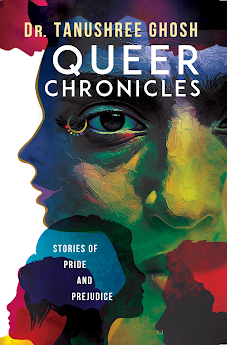QUEER CHRONICLES – STORIES OF PRIDE AND PREJUDICE BY DR. TANUSHREE GHOSH

This collection of short stories by Dr. Tanushree Ghosh begins and ends as an exercise in subtlety. The themes begin on a serene note and meander onto issues that are all relatable. India has gradually progressed beyond the taboos that were linked to homosexuality and diversity in the past, beyond the criminalisation of the same, though there is room for more scope. There are still myriad people who have not yet opened their minds to these ideas. Misconceptions still prevail, and the author tries to hint at them through her narratives. Sensitive, caring men exist, and they need not be gay. Since when have qualities like kindness and tenderness been associated with being gay? Likewise, group sports like men's hockey have always been perceived as macho sports. Women hockey players also are aggressive, and it was a chance statement in the movie 'Chak De' that gave birth to the story titled ‘Hamaari Hockey Mein’. A main character opines, "Persecution is terrible. Th...
